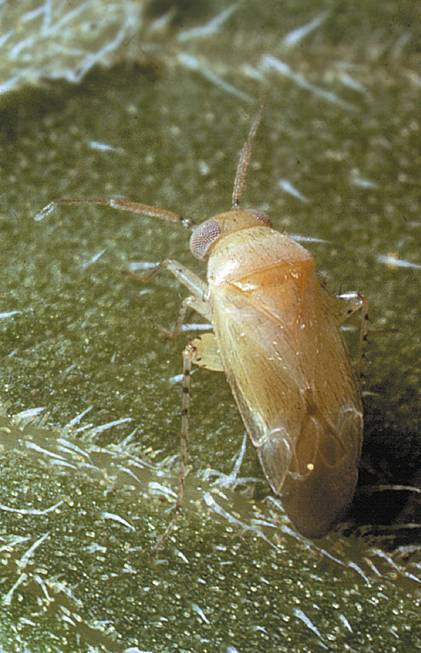Pest or predator?
ADB are well known as predators of helicoverpa eggs and mites. However, they are also plant feeders and on young cotton will feed on small ‘pin’ squares which results in shedding of the squares. Damage at seedling stage is unlikely to affect yield but will delay maturity by 4-5 days.
Damaged (left) and undamaged squares © Mary Whitehouse CSIRO
When do they need controlling?
Monitoring and sampling for ADB is best done early in the morning or late afternoon. ADB populations can be assessed visually as well as with a beatsheet (at the time of this study only visual sampling was used). Assessments should be conducted in the top half of cotton plants.
Overall visual sampling was the most efficient sampling method for ADB. However, at the seedling stage visual sampling, beat sheet sampling and suction methods were equally effective. As the plants mature, visual sampling was found to be twice as effective when compared to beat sheet sampling. This means that ADB numbers found with beat sheet sampling, from boll set onwards, should be multiplied by two to get a better estimate of the population in the field.
If the decision to control is warranted, it is essential to consider the risk of flaring secondary pests. As ADB are also predators, there is a risk that a decision to control them may increase the chance of mite population build-up. As an occasional pest there are few products registered for their control. A low rate of Fipronil is the softest registered option. The only other registered options, OPs (organophosphates), are not available in the IRMS until late in the season and would be highly disruptive to beneficial insects in the crop.
Article by Moazzem Khan and Susan Maas

